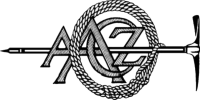- Home
- Nepal
- Adventure Activities
- Peak Climbing
- Mountain Expedition
- Local Tours
- Sirubari Village Homestay
- Ghale Gaun
- Kalinchowk Tour
- Halesi Mahadev - Maratika Cave package
- Chitwan Jungle Safari
- Day tour in Kirtipur
- Day tour in Kathmandu City
- Spiritual Tour to Muktinath
- Chitlang and Kulekhani
- Bardiya National Park
- Jeep Tour to Rara Lake
- Gosaikunda Lake
- Manakamana day Tour with cable-car ride
- 4WD Jeep Tour to Upper Mustang
- Family Holidays
- Heli & Mountain Flights
- Trekking Routes
- Kailash Mansarovar
- Bhutan
- Tibet
- Multi Country
- Domestic Flights
- Contact
- Home
- Nepal
- Adventure Activities
- Peak Climbing
- Mountain Expedition
- Local Tours
- Sirubari Village Homestay
- Ghale Gaun
- Kalinchowk Tour
- Halesi Mahadev - Maratika Cave package
- Chitwan Jungle Safari
- Day tour in Kirtipur
- Day tour in Kathmandu City
- Spiritual Tour to Muktinath
- Chitlang and Kulekhani
- Bardiya National Park
- Jeep Tour to Rara Lake
- Gosaikunda Lake
- Manakamana day Tour with cable-car ride
- 4WD Jeep Tour to Upper Mustang
- Family Holidays
- Heli & Mountain Flights
- Trekking Routes
- Kailash Mansarovar
- Bhutan
- Tibet
- Multi Country
- Domestic Flights
- Contact
Tsum Valley Trek
An exciting Trekking experience
Nepal offers such diversity that the visitor may experience any lifestyle from the stone age, in the far west and high hills, to the jet age of Kathmandu. Tsum Valley is one of the world's remotest Himalayan Valleys, which is a popular and new trekking destination. It was impossible to get to Tsum Valley, and it's permit for restriction until 2008. Tsum Valley knows as a hidden village, lies in the northern part of Manaslu. Tsum people have their own way of family life, which may be surprising for many visitors.
It is surrounded by soaring Himalayan peaks, including Baudha Himal and Himal Chuli to the west, Ganesh Himal to the South and Sringi Himal to the north. The northern terminus of the valley is bounded by three high passes to Tibet, including Ngula Dhoj Hyang (5093m) to the east, and Thapla Pass (5326m) to the west.
All travel is done on foot, a long time-worn trails that feature many ancient Chorten and carved mani stone walls inscribed with prayers and depictions of deities. The Tsum valley has been the main attraction of many trekkers now for its unique Tibet culture, old monasteries, mani walls and the development of good teahouses/guesthouses along the trail of Tsum valley treks of Nepal.
Destination: Manang, Nepal
Trip Routes: Kathmandu - Soti Khola - Maccha Khola - Jagat - Chisopani - Chumling - Chokhangparo - Nile - Mu Gompa - Burgi VIllage; Milarepa Cave - Chumlig - Philim - Khorlabesi - Soti Khola - Kathmandu; Arughat
Activities: Trekking and Sightseeing
Season: Spring and Autumn
1 - 10
Detailed Itinerary
- Day 1 Arrive Kathmandu & Transfer to Hotel (1,300m/4,264ft)
Upon your arrival in the Tribhuvan International Airport (TIA) in Kathmandu, you will be greeted by a representative from Mountain Sun Valley Treks who will drop you off at your booked hotel. - Day 2 Drive from Kathmandu—Soti Khola (710m/2,330ft), 8-9 hours drive.
A scenic drive west through the middle hills to Malekhu, then a secondary road to Dhading Besi and a 35km dirt road to Arughat on the Budhi Gandaki River. This is a large Newar and Gurung village with many mango orchards. Then after 2 hrs drive, we reach to Soti Khola. - Day 3 Trek from Soti Khola to Maccha Khola (870m/2,952ft): 6-7 hours
The trail undulates over ridges and passes waterfalls on a steep trail clinging to the side of a cliff. It then drops to pass rice paddies before climbing to the attractive Gurung village of Labubesi. Beyond, the valley opens out and the trail drops onto gravel banks along the river before rising to the village of Machha (Fish) Khola above the river – with good views of the 7,000m/22,950ft Ganesh Himal. - Day 4 Trek from Maccha Khola to Jagat (2340m/7676ft): 6-7 hours
The narrow trail makes some minor ups and downs and eventually crosses the Tharo Khola, flowing in a rocky ravine, then reaches Khorlabesi. After a few more ups & downs there is a small trailside hot spring, from where we reach to Tatopani. From the Hot spring, we climb over another ridge, then cross the Budhi Gandaki on a suspension bridge. Cross to the west bank of the Budhi Gandaki, climb over a ridge, and trek along the river then climb towards the village of Jagat. - Day 5 Trek from Jagat to Chisopani (1660m/5,445ft): 4-5 hours
We climb over a rocky ridge to Salleri and then descend to Sirdibas. The valley widens a bit as the trail continues up to Ghatta Khola. Continue upstream to a long simple hanging bridge. Climb up to Philim, a large Gurung village. Walk past Philim to the north across a forest with the views of the narrowing valley we reach Chisopani. - Day 6 Trek from Chisopani to Chumling (2,386m/7,827ft): 6 - 7 hours
Descend to the trail going to the Tsum Valley. Climb through pine and rhododendron forests. Enjoy the views of Himalchuli mountains at 7893m and Boudha Himal from Lokpa, a small beautiful village. Pass Lokpa, descend half an hour towards Lungwa Khola and climbing, difficult trail further two hours north through pines and rhododendrons we reach Gumlung. Crossing the Siyar Khola, finally arrive at Chumling, from where we can view Shringi Himal. Visit the old Chumling gompa and the stone streets of the village. - Day 7 Trek from Chumling to Chokhangparo (3,010m/9,903ft): 4-5 hours
Cross the suspension bridge onto the opposite bank. Enjoy the great views of Ganesh Himal. Walk past Rainjam to Serpu Khola crossing another bridge we arrive at the Gho Village. Another continuous 2 hours climb to Tsum takes us to the village of Chhokangparo. Weather permitting; enjoy the views of Himalchuli at 7893 meters and Ganesh Himal at 7140m. - Day 8 Trek from Chokhangparo to Nile (3,361m/11,058ft): 5-6 hours
While climbing above Chokhangparo, better to be careful of altitude problems. Walk past Lamagaon crossing rope suspension bridge to the Rachen Gompa, which is also well known as Nunnery Gompa too. We make a small visit and then we cross the Shiar Khola. Continue walking through the well-managed villages Lar (micro hydropower), Phurba and Pangdun. Leaving old historic Stupa of Buddha in a way crossing the village of Chhule, climb upstream and cross the bridge to finally arrive at the Nile. If you consider we can make your visit to a famous monastery of Chhule which is located at the top of the area. - Day 9 Trek from Nile to Mu Gompa (3,700m/12,174ft): 3 hours
We are now almost close to the Tibetan border. Walk to the west bank of the valley through the Tibetan landscapes. Climb up to the Mu Gompa. We also visit the monastery. Then after, we visit the Dhephu Doma Gompa. - Day 10 Mu Gompa, sightseeing
Today we make a sightseeing of the whole Mu Gompa Region. Mu Gompa is the largest monastery in the region. The Gompa lies at the highest and most remote part of the Tsum Valley. After exploring the Mu Gompa area, you may also consider the option of getting to the base of Pika Himal (4865m). - Day 11 Trek from Mu Gompa to Burgi Village (3,245m/10644ft) via Milarepa cave: 5 hours
Trek back through Chhule and Phurba, on the east bank of the Shiar Khola. Finally, we arrive at Burgi village. Climb up to the Milarepa's Cave Milarepa Cave (Piren Phu) is known for its mesmerizing glimpses of Poshyop Glacier, Kipu Himal, and Churke Himal. - Day 12 Trek from Burgi village -Chumling (2,386/7,827ft): 5-6 hours
Continue trekking watching the greenery of nature and descend to Chhokang Paro. From their continued descending to Gho. Descending further, we arrive at the bridge over the Sarpu Khola. Trekking along the lower Tsum Valley takes you to again Chumling. - Day 13 Trek from Chumling to Philim (1,570m/5,103ft): 6-7 hours
The trail continues to Lokpa, enjoying the gorgeous Samba Falls. Finally arrive at Philim after 6 or 7 hours long trekking. A trail passes through the Phillim village that leads to the Ganesh Himal Base Camp. - Day 14 Trek from Philim to Khorlabesi(970m/3182ft: 6-7 hours
Descend to Sirdibas and we finally reach to Jagat. Continue trekking to Dobhan. Finally, arrive at Tatopani, continue walking up and down from Tatopani to reach Khorlabesi. - Day 15 Trek from Khorlabesi to Soti Khola (700m/2,296ft): 6-7 hours
The trail crosses the Tharo Khola flowing in a rocky ravine. Head down again to the river and traverse to Machha Khola village. Walk along the Budhi Gandaki River to reach to Gurung village of Labubesi. Pass the two waterfalls on a steep rocky trail on the side of a cliff. Finally, cross the bridge to arrive at Soti Khola. - Day 16 Trek from Soti Khola to Arughat to Kathmandu (1300m/1,968ft): Walk 4 hours and drive 7-8 hours
From here we drive, down the Budhi Gandaki Valley to Arughat and on to Kathmandu; with lunch on the way. Transfer to your hotel, and a free afternoon. - Day 17 Departure
Transfer to Tribhuvan International Airport for your onward flight to your next destination.
This trip can be redesigned or redeveloped as per your taste, For more information please e-mail us at This email address is being protected from spambots. You need JavaScript enabled to view it.
Cost and dates
We do small group trek or private trip as your request.
For quick information / contact us at whatsapp/viber + 977 9841815039
Or Drop us inquiry at This email address is being protected from spambots. You need JavaScript enabled to view it.
Tips & Resources
This trek can be redesigned or redeveloped as per your taste, For more information please e-mail us at This email address is being protected from spambots. You need JavaScript enabled to view it..
Frequently Asked Questions
It is always a good idea to involve yourself in doing physical exercises before trekking. Not that you have to be all athletic and muscular to trek. An average level of physical fitness will make the journey less stressful.
Availability of drinking water is not the problem. The problem is the cost of it at higher altitude. As you gain height, the price of water rises up to 2-3$ per liter.An alternative way of getting drinking water is by having your water bottles filled in tea houses. Tea houses will provide you boiled water for about 1$ per liter. They are completely safe for drinking.
Food is not of any concern while trekking. You will get all kinds of cuisines. For breakfast, tea houses will provide you with eggs cooked in your preferred style along with pan cakes, bread butter, roti, and so on.Various other dishes like pizza, pasta, momo, chowmein and many more are also available. The most preferred dish is Dal Bhaat. It is a typical Nepali meal. Rice is served with vegetable curry, lentils, tomato chutney and meat curry.
Trekking is an extreme sport and does come with a lot of risks. Some unavoidable risks are avalanche, heavy rainfall, earthquake, landslide and other such natural calamities.You might fall and injure yourself or catch some viral flue. The deadliest risk of trekking is AMS or Acute Mountain Sickness. This sickness occurs when a great altitude is gained and the body fails to adjust to the changing pressures associated with it. Anyone can fall a victim of the sickness and if not treated in time, it can be fatal.
There is no such hard and fast rule that you must have one. But it is highly advisable to travel with them. Some of the treks cannot be trekked without a guide most of them are the restricted ones.
Showers are available at the teahouses. They will usually be shared bathrooms in most teahouses, especially the higher up you go. You will have to pay for a hot water shower per person.
Visit us
-
JP Marga, Thamel, Kathmandu, Nepal
-
+977-01-5365371
-
+977 98418-15039
(Whats App, Viber & Telegram)








